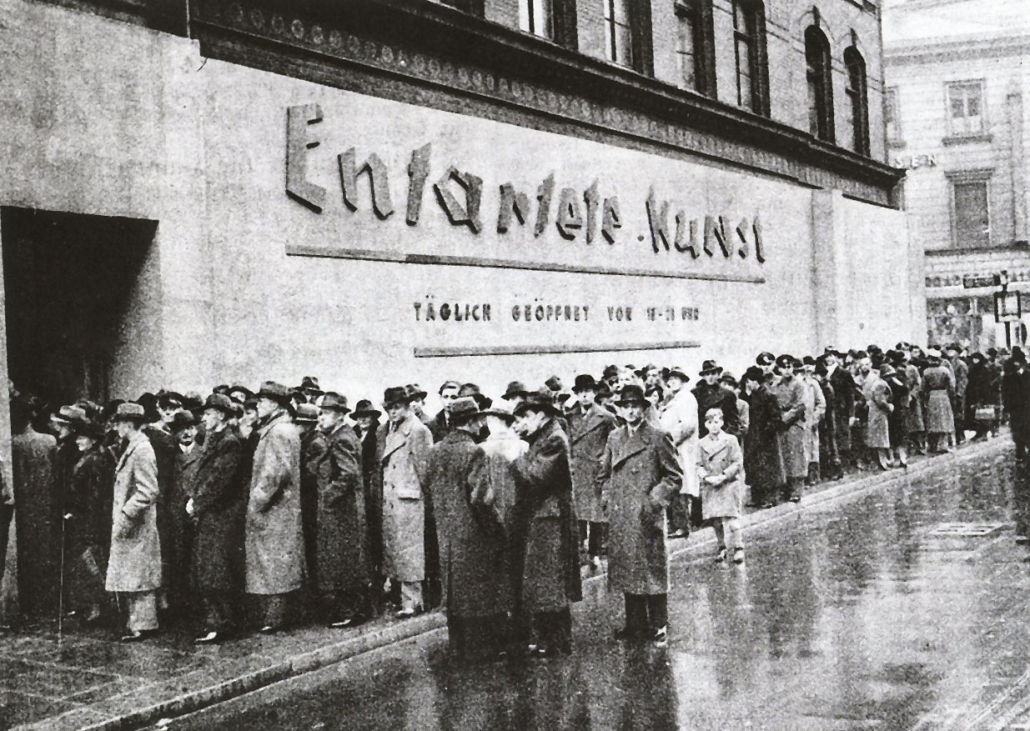
I likely would have never set foot in the Glenstone Museum in Potomac, Maryland if it were not for the influence of one of my favorite celebrities who posted his visit on social media. After all, it was a modern art museum. Modern art—my beloved nemesis whom I have grown to cherish. Unlike most museums, modern art is often displayed as a spectacle. Museums which are better suited to display classical works of art in ornate frames in opulently decorated rooms do a disservice to the presentation of modern art by housing them in transitory spaces where they inevitably become cycled through. However, the Glenstone Museum seeks to contextualize modern art by customizing the environment to the pieces themselves. Modern art no longer looked like a futuristic time-traveler caught in an ancient space. The Glenstone Museum granted modern artworks the autonomy to communicate with their audience in a setting where they were being catered to. Not to the comfort of the viewer. Only here did I begin to understand the true essence of modern art.
Modern art is the cryptid of the art world. Some people believe in its validity while others refuse to acknowledge it as “real art.” Like the Loch Ness Monster or Abominable Snowman, modern art cannot be easily documented in an explorer’s journal like one would record plant and animal species. Modern art has no conventions to bind it to a singular binomial nomenclature. Modern art is beautifully untamed, and to restrain it by a set of expectations or traits would limit its significance as a medium of profound expression.
I didn’t always have this mindset.

Not long ago, nothing would set my teeth on edge more than modern art. My aversion to it was about as raw as William Hazlitt’s disgust towards a spider, but, like him, I had no strong basis for my hatred. The Clyfford Still’s, Jackson Pollock’s, and Mark Rothko’s of the world used to haunt me in my museum visits. Sometimes their art comes in the form of a canvas draped in slightly different hues of the same color such as Still’s PH-571, an all-too nauseating array of unharmonious paint splatters like in Pollock’s Number 5, or lifeless orange rectangles placed on top of one another in Rothko’s Orange, Red, Yellow. This arrangement of colors tortured me—their eerie blankness somehow seemed to possess a reflective quality to them that I found it difficult to look at. Blinding, almost. When I regretfully stumble into the abstract exhibition of any museum, I find it an opportune time to test my flight response. I would ask myself why my aversion to modern art was oddly primal. I did not know why I wanted to avoid these exhibits; I only knew they caused me discomfort.
Many people despise modern art for a plethora of reasons. Some individuals are clouded by conservative aesthetic tastes, which is to say they prioritize four major criteria. First, they confine art to high craftsmanship and expensive materials. Some would say to call Fountain by Marcel Duchamp “art” would be a joke. How can we call a readymade piece a work of art when old masters like Michelangelo or Leonardo da Vinci exist? Is modern art a trick of confidence to say that truly anyone can make art? Many anti-modernists also value realistic representations, the ability to accurately replicate things as seen in “real life.” Thomas Cole’s landscapes would move them to tears, while Matisse’s still-life’s would move them to tears for a negative reason. Perhaps most importantly, art should have comprehensible subject matter. If the audience cannot tell what the art is depicting or symbolizing at first glance, they will proceed to the next piece as quickly as they approached it. Modern art challenges viewers to assign their own meaning, which is precisely why people are afraid of it: they fear most what they cannot understand.

Barnett Newman’s Who’s Afraid of Red, Yellow, and Blue III received overwhelmingly diverse critical reactions to its debut in the Stedelijk Museum in 1969. Stretching approximately eighteen feet wide and eight feet tall, the painting contains a small stripe of blue on the left, an even smaller stripe of yellow on the right, and the rest of the plane is coated in bright red. The museum received numerous letters expressing people’s visceral hatred for the work and called them to remove it from display. One fateful day, Gerard Jan van Bladeren carved irreversible damage into Who’s Afraid of Red, Yellow, and Blue III. With a boxcutter in hand and a particularly destructive dream, he ceaselessly slashed into the canvas with the gashes measuring together to almost fifty feet long. More letters arrived at the museum from people applauding van Bladeren’s act: “‘This so-called vandal should be made the director of modern museums’… ‘He did what hundreds of thousands of us would have liked to do,’” (99% Invisible). If the painting itself does not visually display, well, anything in the eyes of the upset museum attenders, then they must not oppose the art itself. Video essayist Jacob Geller suggests that the people who are afraid of modern art are really afraid of the artist behind the work. When people attempt to censor what constitutes “real art,” they actually attempt to silence who can make art. Geller explains,
When people prescribe art to a specific set of qualities and attack everything that lays beyond those lines, we have to understand what they’re doing. Those qualities, they just so happen to perfectly align with the dominant cultural ideology…They are enforcing a hierarchy, they’re attempting to define a cultural narrative, and above all else, they’re not talking about art.”
(26:43-27:14)
By “the dominant cultural ideology,” Geller refers to the standards of what make “good art,” to which there is a clear scale of worthy art versus worthless. The worthless art implies the people who create “bad art” possess no skill; therefore, their work should not be considered art.
Admittedly, I once believed this notion. Why should I consider a solid-colored canvas as art when even a child could make it? As an artist myself who sometimes works into the ungodly hours of the night to perfect my work, the oversimplified appearance of modern art often feels laughable. As with most modern art, the complexity of the art lies hidden in the development of the piece. The restoration of Who’s Afraid of Red, Yellow, and Blue III proved to be a failure when the audience noticed the “shimmering quality” of the red had now become a lifeless hue (99% Invisible). Something mysterious about Newman’s techniques could not be replicated, even by a conservator who worked with the original artist before. However, if people cannot outwardly recognize the depth to his work, they reduce it to a gimmick. Newman’s workexemplifies the qualities of modern art that anger people to sometimes violent ends. Who’s Afraid of Red, Yellow, and Blue III seemingly takes little talent to create, has no identifiable semblance to anything realistic, and people just don’t get it. To the individuals that claim that Newman’s art is not “good art,” will be horrified to realize that art is completely personal.

History often repeats itself—arguably the most infamous demolition of modern art dates back to World War II. The Nazis’ abhorrent agenda included distinguishing good art from “degenerate art,” otherwise known as entartete kunst (United States Holocaust Memorial Museum). Through the rigorous purging of countless art museums and private collections, Hitler intended on creating the Führermuseum, which would only contain art that he felt represented the ideals of the Third Reich. He considered modern art to be everything the Nazis stood against, essentially freedom of thought and freedom of expression. In a 1937 exhibit called “Degenerate Art,” the Nazis displayed countless modern artworks by artists such as Pablo Picasso, Salvador Dali, and Henri Matisse for the German public to loathe. Upon its opening, the President of the Reich Chamber of Visual Arts, Adolf Ziegler, proclaimed, “‘All around us you see the monstrous offspring of insanity, impudence, ineptitude, and sheer degeneracy. What this exhibition offers inspires horror and disgust in us all,’” (19:08-19:19). Interestingly, Ziegler never attacks the art itself; he attacks the artists as insane, impudent, inept, and degenerate. Undoubtedly, the Nazis exemplify the fear of modern art. The fear of not understanding what is meant to be wholly deciphered.
For some while, I mulled over the very nature of art and its purpose. No matter how much I sought to define art under a clear definition, I had an even more difficult time identifying what made modern art modern art. Art does not have to serve a greater purpose. Art can simply be because the artist willed it so. Forms of art are unbelievably vast; so, when physical qualities fail to unite the diversity of art, what commonality links them together? Their ability to express and evoke emotion.
Art is…utterly subjective.
Modern art, that elusive creature, capitalizes on this facet of art possibly more than any other genre of art. Modern artists surrender objectivity and instead confront the viewer with a task unique to its kind. How does one “wholly decipher” modern art? You decide its worth, its meaning, its identity. Subjectivity makes people uneasy. It makes me uneasy. I experienced it most intensely at the Glenstone Museum where I could emotionally feel some message being communicated, but I hesitated to receive it because I believed I could experience modern art invalidly. Humans are creatures who seek concrete answers to abstract questions. Hence, when those answers are muddied by uncertainty and rely on the individualism of each viewer, there are no right or wrong answers. Some perceive this job as burdensome because feelings are overwhelmed with uncertainty, relativity, fear; it can become a perpetual cycle of self-debate which many would rather not put themselves through. Though, everyone should experience modern art at least once in their life. For the sake of promoting freethinking and deconstructing boundaries of what makes “good art,” modern art should be respected for its unapologetic unorthodoxy. It deserves to be understood—not objectively, but as an impetus for independent thoughts and emotions.

References:
“‘Degenerate Art'” by the United States Holocaust Memorial Museum
“The Many Deaths of a Painting” by 99% Invisible
“Who’s Afraid of Modern Art: Vandalism, Video Games, and Fascism” by Jacob Geller
